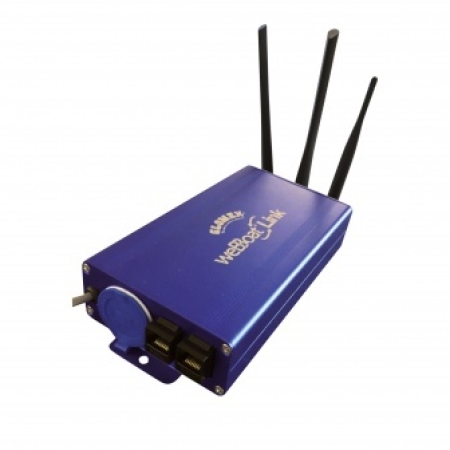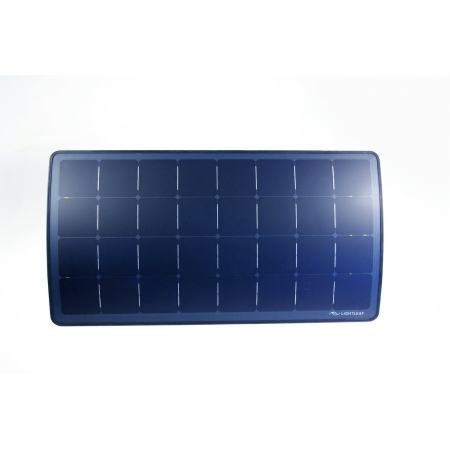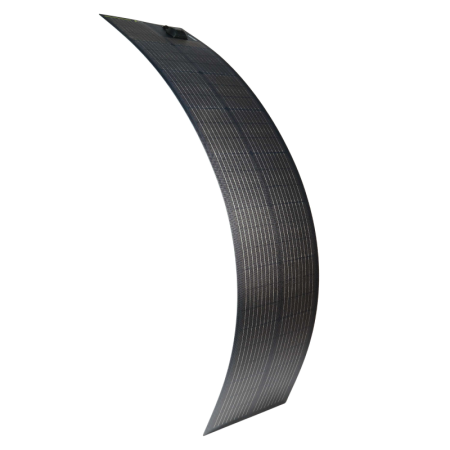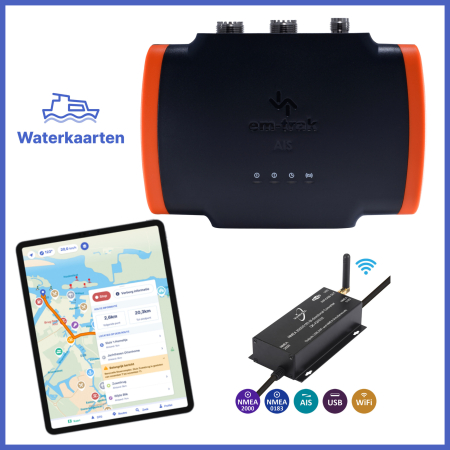Always connected - also on the water
Living in 2025, we are constantly online. Email, social media, WhatsApp, FaceTime, checking the weather, reading news - not a day, maybe not even an hour, goes by without the internet. We want that connectedness on board too.
If you sail your sloop for a day, your mobile will usually suffice. But do you sail long trips or make a crossing across the Atlantic? Then the internet is not only about convenience, but also about safety. Think current weather information, contact with the home front and navigation updates. And even for a week's holiday in the Netherlands, good internet comes in handy. Maybe you want to watch a movie or occasionally work from your boat.
In this article, we explain to you exactly which internet solution best suits your needs and cruising area.
1. Mifi router: internet via mobile network
A Mifi router is a compact wireless router with a SIM card inside. The little device connects to the mobile network (4G or 5G) and creates its own Wi-Fi network on board. You can use it to connect multiple devices at once, such as your tablet, laptop and phone.
✅ Benefits:
- More stable and powerful than a hotspot on your phone
- Connecting multiple devices simultaneously
- Easily portable and energy-efficient
- Often combined with external antenna for better range
⚠️ Disadvantages:
- Only usable where mobile network is available (i.e. not in the middle of the sea)
- Consumption of data bundle - especially when streaming
- Sometimes restrictions in border areas (EU roaming)
Tip: Choose a router with an external antenna connector and place an outdoor antenna on your cabin roof or backstay for better coverage.
Our products:
-
Quark-Elec R041 Wireless 4g LTE router
Oorspronkelijke prijs was: € 399,00.€ 379,00Huidige prijs is: € 379,00. -
Quark Elec R042 Mobile signal amplifier
€ 359,00 -
Quark-Elec AS13 2G/3G/4G outdoor Omni Antenna
€ 69,00 -
Glomex WeBBoat 4G LITE EVO
Oorspronkelijke prijs was: € 799,00.€ 729,00Huidige prijs is: € 729,00. -
Glomex WeBBoat Link IT1304
Oorspronkelijke prijs was: € 829,00.€ 689,00Huidige prijs is: € 689,00.
2. Hotspot via your smartphone
The easiest way to use the internet on your boat is to use your phone as a mobile hotspot set up. You then make a Wi-Fi connection to your laptop or tablet via your phone's 4G/5G network.
✅ Benefits:
- No additional device required
- Works directly with your existing data bundle
⚠️ Disadvantages:
- Uses up a lot of your phone's battery
- Connection is less stable than with a Mifi router
- Not suitable for multiple users at once or long sessions
- Not coverage everywhere (especially far out on the water)
Note: in border areas, your device may unintentionally switch to a foreign network. In that case, manually set the network.
3. Wi-Fi in ports
Many marinas today offer free or paid Wi-Fi to berth holders. The quality varies widely: sometimes it is fast and stable, sometimes weak or overloaded.
✅ Benefits:
- Often available for free
- No data charges if it works well
⚠️ Disadvantages:
- Range often limited to immediate vicinity of port office or jetty
- Security often weak - use a VPN for sensitive data
- Not available when at anchor or underway
Tip: use a wifi booster with outdoor antenna to pick up harbour Wi-Fi better, even from an anchorage.
4. Starlink: internet via satellite
For those who really want to be connected anytime, anywhere - even in the middle of the sea - there is Starlink Maritime. This is a satellite internet system from SpaceX, developed specifically for shipping.
✅ Benefits:
- Also works on open sea, global coverage
- High speed and low latency (for satellite links)
- Ideal for those working on board or wanting to broadcast livestreams
⚠️ Disadvantages:
- Expensive: high purchase cost + monthly subscription fee
- Energy consumption is relatively high
- Antenna installation and positioning requires attention
Starlink Roam (for RVs/boats in coastal areas) is a cheaper option, but only works on land or near the coast - not on the high seas. Starlink is a good option if you sail on lakes (Marker/IJsselmeer), other inland waters and stay close to coastal areas (worldwide).
Read our hands-on experience with Starlink on board.
5. Satellite communication via Iridium, Inmarsat and others
If you really sail out of range of mobile networks - for example, during a crossing to the Azores or an ocean crossing - you end up with satellite communication. Iridium is the most commonly used system in the pleasure craft, but there are other options such as Inmarsat and Thuraya.
📡 Iridium: reliable and global reach
Iridium uses a network of 66 satellites and offers global coverage, including on the ocean or in polar regions. The best-known device is the Iridium GO! - A compact satellite Wi-Fi hotspot.
- The Iridium GO! connects to your smartphone or tablet via Wi-Fi.
- You use dedicated apps to send messages, download e-mail or get weather maps.
- Speed is limited (about 2.4 kbps), but sufficient for text, grib files or emergencies.
✅ Benefits:
- Global coverage, even far out to sea
- Compact and relatively energy-efficient
- Works with your existing smartphone and apps
- Possibility of SOS function via e.g. GEOS
⚠️ Disadvantages:
- Very slow: not suitable for surfing, streaming or video calls
- Subscription required, often with monthly or prepaid fees
- Only suitable for basic communication
Other Iridium variants and brands:
- Iridium GO! exec - faster successor to the GO! with higher speed (~88 kbps)
- Iridium 9555 / 9575 Extreme - classic satellite phones for voice and SMS
- PredictWind Offshore + Iridium GO! - common combination for sailors wanting to receive weather charts, tracking and e-mail
🛰️ Other satellite systems in brief:
| System | Coverage | Known devices | Speed | Suitable for |
|---|---|---|---|---|
| Iridium | Worldwide | Iridium GO!, 9575, GO! exec. | Slow (2-88 kbps) | Weather, e-mail, emergencies |
| Inmarsat | Good at sea, no poles | Fleet One, BGAN | 100-500 kbps | Larger yachts, more expensive |
| Thuraya | Europe, Middle East | SatSleeve, XT-Lite | Reasonably fast | Not worldwide |
Internet at sea: what is feasible?
Retrieved from inland water or along the coastline of the Netherlands and Europe you usually have good 4G/5G coverage with a Mifi router or phone.
Retrieved from open sea (>10-20 nautical miles from the coast) you usually lose this range. Only satellite solutions such as Starlink or (for emergencies) a Iridium GO! then continue to work.
Conclusion:
- For day trips and short trips, a hotspot or Mifi router sufficient.
- For longer trips or working on board, a Mifi with outdoor antenna highly recommended.
- For ocean travel or complete independence Starlink THE solution.



















